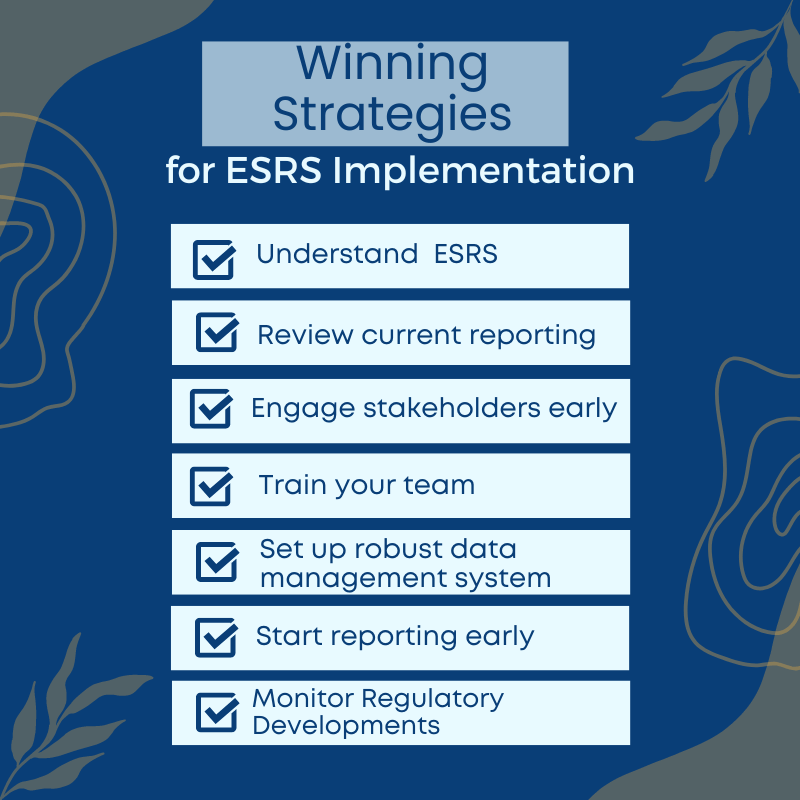In today’s climate, sustainability reporting has become more than just a mere tick-box exercise. It has evolved into a strategic tool that allows organizations to understand their environmental, social, and governance (ESG) impacts, communicate them effectively to stakeholders, and demonstrate commitment to sustainable business practices. Two major sustainability reporting frameworks currently employed are the Corporate Sustainability Reporting Directive (CSRD) and the Global Reporting Initiative (GRI) Standards. This blog post aims to provide a comparative analysis of these two frameworks, highlighting their similarities, differences, and unique approaches.
Understanding the Corporate Sustainability Reporting Directive (CSRD)
Unveiled in December 2022, the Corporate Sustainability Reporting Directive (CSRD) is a pioneering regulation from the European Union that supersedes the Non-Financial Reporting Directive (NFRD). The CSRD broadens the horizon of sustainability reporting, imposing more rigorous and comprehensive requirements for large companies and all public-interest entities (PIEs) within the EU. This expansion is a departure from the NFRD, which previously applied only to sizable PIEs.
At the heart of the CSRD lies an ambitious goal – to enhance transparency and provide a holistic perspective on a company’s performance. This focus is projected to stimulate sustainable investments, curb greenwashing, and align with the European Green Deal’s objectives.
A key innovation introduced by the CSRD is the mandatory European Sustainability Reporting Standards (ESRS), presently under development by the European Financial Reporting Advisory Group (EFRAG). The ESRS are set to encompass a wider range of ESG factors and furnish more nuanced guidance on reporting practices.
The countdown has begun for the first set of 12 ESRS standards, slated for adoption by the European Commission by June 30, 2023. This milestone will usher in a new era of corporate sustainability reporting in Europe, paving the way for more responsible and sustainable business practices.
Exploring the Global Reporting Initiative (GRI) Standards
On the other side of the spectrum, the GRI Standards are widely recognized and implemented globally. Developed by the Global Reporting Initiative, these standards aim to promote transparency, accountability, and sustainable development. The GRI Standards consist of universal standards, topic-specific standards, and sector-specific standards, covering a comprehensive array of ESG topics.
Unlike the CSRD, the GRI Standards are voluntary and can be adopted by organizations of any size and in any region. They are designed to be flexible and adaptable to suit the diverse contexts in which organizations operate.
A Comparative Look: Corporate Sustainability Reporting Directive and GRI Standards

Scope and Applicability
While both CSRD and GRI Standards aim to increase transparency and accountability, their scope and applicability differ significantly. The CSRD is mandatory for large companies and all PIEs within the EU (except micro companies), whereas the GRI Standards are voluntary and applicable to any organization worldwide. This fundamental difference can significantly impact the degree to which companies commit to and implement these frameworks.
Reporting Framework and Standards
The CSRD follows a ‘comply or explain’ approach. It requires companies to report in accordance with the ESRS, which provide a more prescriptive reporting framework. If companies do not follow these standards, they are required to explain why. The ESRS requires companies to report on a set of mandatory disclosures and then follow a double materiality assessment process to determine the additonal, most relevant sustainability matters to report on.
In contrast, the GRI Standards are more flexible. They allow companies to select the topics that are most relevant to their business and stakeholders. This approach encourages companies to focus on material issues, providing a more tailored view of their sustainability performance.
Focus Areas
Another difference lies in the focus areas of these frameworks. The CSRD emphasizes the ‘double materiality’ perspective, considering both the impact of sustainability factors on the company and the impact of the company’s activities on sustainability matters. The CSRD requires companies to report on impacts, risks and opportunities related to governance, environmental and social factors as outlined in various ESRS standards.
On the other hand, the GRI Standards follow a broader ‘stakeholder inclusiveness’ principle. They emphasize the importance of considering the interests and expectations of all key stakeholders in sustainability reporting. This difference in focus might lead to variations in the type of information reported under these two frameworks.
Verification and Assurance
Under the CSRD, sustainability reports will have to be assured by an independent assurance service provider. This mandatory third-party verification provides an added level of credibility to the reported information.
The GRI Standards, while recommending external assurance, do not make it mandatory. However, if assurance is obtained, the GRI Standards provide guidelines on how to report on it.
The Way Forward
As companies navigate the evolving landscape of sustainability reporting, the choice between CSRD and GRI Standards, or even the decision to use a combination of both, will depend on several factors. These include their size, location, stakeholder expectations, and strategic sustainability goals.
The CSRD, with its prescriptive approach and legal mandate, could be more suited to large companies and PIEs operating in the EU that require a structured framework to report their sustainability performance comprehensively. In contrast, the GRI Standards, with their flexible and stakeholder-centric approach, could appeal to companies seeking a more tailored sustainability reporting framework that can be adapted to various contexts and stakeholder needs.
In conclusion, both CSRD and GRI Standards have unique strengths and cater to different needs in the sustainability reporting landscape. Despite their differences, their common goal remains the same: promoting transparency, accountability, and sustainable business practices. As companies strive towards sustainability, understanding these frameworks is an essential step in communicating their sustainability journey effectively.
Need support with implementing the CSRD/ESRS?
Take the first step towards achieving full compliance with the European Corporate Sustainability Reporting Directive (CSRD) by partnering with The CSRD Compass. Our dedicated team of ESG experts is here to support your company on this transformative journey. With a range of comprehensive services available, including e-courses, in-company training, tailored advice, gap analysis, and a wealth of supporting resources on our website, we are well-equipped to guide you through the complexities of sustainability reporting.
Don’t navigate the CSRD requirements alone. Let our team provide you with the knowledge, tools, and insights necessary to meet your reporting obligations effectively and drive sustainable business practices.
Visit our website today to learn more about our services and how we can assist you in achieving CSRD compliance. Together, we can pave the way for a more sustainable future. Contact us now and embark on your path to success with The CSRD Compass.


